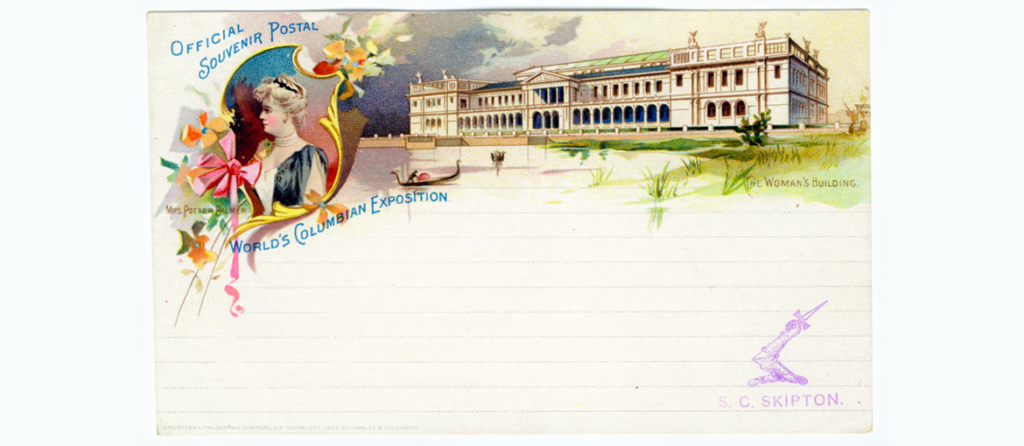“Like all great inventions, the picture postcard caused a silent revolution in our habits. It secretly freed us from the drudgery of writing letters. Still alive, however, are people who can remember the days when it was considered necessary and even pleasant to write letters to friends. They were moments of leisure. Fortunately, the picture postcard has freed the modern writer from this bondage. Previously, when a person traveled abroad, he was forced to spend so much time writing laborious descriptions of his trip to his friends back home. Now, it is enough to buy a postcard at every station, scribble a few words in pencil and post it, which enhances the pleasure of traveling.”
With these words, London journalist James Douglas, in 1893, described the importance of postcards as a means of communication only 20 years after their appearance. It was October 1, 1869, and the first “korrespondenz-karte,” a correspondence card, left the Austrian town of Perg and arrived in Kirchdorf the next day. The message was short and personal in nature: the sender asked the recipient to visit him or her.

The goal of the first postcards was actually nothing more than cost reduction. Earlier that year, Emanuel Herrmann, an Austrian economist, had submitted a proposal to the Minister of Trade for the introduction of this new mode of correspondence, which was also published in the newspaper “Neue Freie Presse.” The idea was to send small cards with short texts, such as announcements, greetings or greetings, at an affordable price. They would travel without an envelope, with the stamp already printed, the address would be written on one side and the message on the other. Because of their ease of use, they would have opened a market even among people with a basic level of literacy. The proposal was welcomed by Adolf Maly, Director of the Vienna Post and Telegraphs, who quickly authorized the circulation of postcards by mail.
Postcards cross borders
Today it is now widely acknowledged that Herrmann shares credit with Heinrich von Stephan, postmaster of the German Empire. In 1865, at an international postal conference, the official spoke of the introduction of the “postblatt,” something like the “open sheet of mail,” in the form of a checkbook, as a much cheaper and more practical mode of communication than, in his opinion, the now obsolete letters. However, the idea was not followed up. Exactly like the private, i.e., non-state-issued, postcard of the North American company H.L. Lipman, which had had the patent since 1861 but had to stop printing due to the outbreak of the Civil War.

The popularity of this new medium was immediate, and the number of postcard printers grew rapidly all over the world, from Chile to Japan. Also in 1874, the first congress of the General Postal Union, a precursor to the Universal Postal Union, a United Nations body charged with promoting international cooperation in postal matters, was held in Bern. This is how letters and postcards began to cross borders without having to adapt to the laws and tariffs of each individual country.
Birth of picture postcards
None of these early postcards included illustrations or photos, but soon their potential began to be seen. Although it is difficult to define exactly, 1893 is often referred to as the year when picture postcards began to be marketed for sale to the public during the Chicago World’s Fair.

The postcard boom was directly related to the first decades of mass tourism. Travelers wanted to share images of the places and monuments they visited. One of the earliest examples is that of Prince Edward of York’s parents, who sent him a memento of the Eiffel Tower in Paris in 1896.

In those same years, photography made its way into the world of postcards, a phenomenon that experienced its full expansion when, in 1902, the British Post Office allowed messages to be written on half of the side normally reserved for the address. This allowed the vacant backside to be filled with an image.

The hobby of collecting postcards
“Postcard madness,” as the press of the time called it, not only led society to depict landscapes, portraits, exhibitions, royal visits, humorous scenes or even current events, but also the hobby of collecting these pieces of cardboard. Thus, in 1897, the World Association Kosmopolit was founded in Nuremberg, a club of postcard collectors that was active until World War I and, at its peak, had more than 15,000 members in Germany alone.
Today, thousands of people all over the planet are recovering the initial spirit of this form of communication with so-called “postcrossing,” or postcard-sending chains. The operation is the same as in the old days, except that now the Internet is used to connect postcard enthusiasts.

